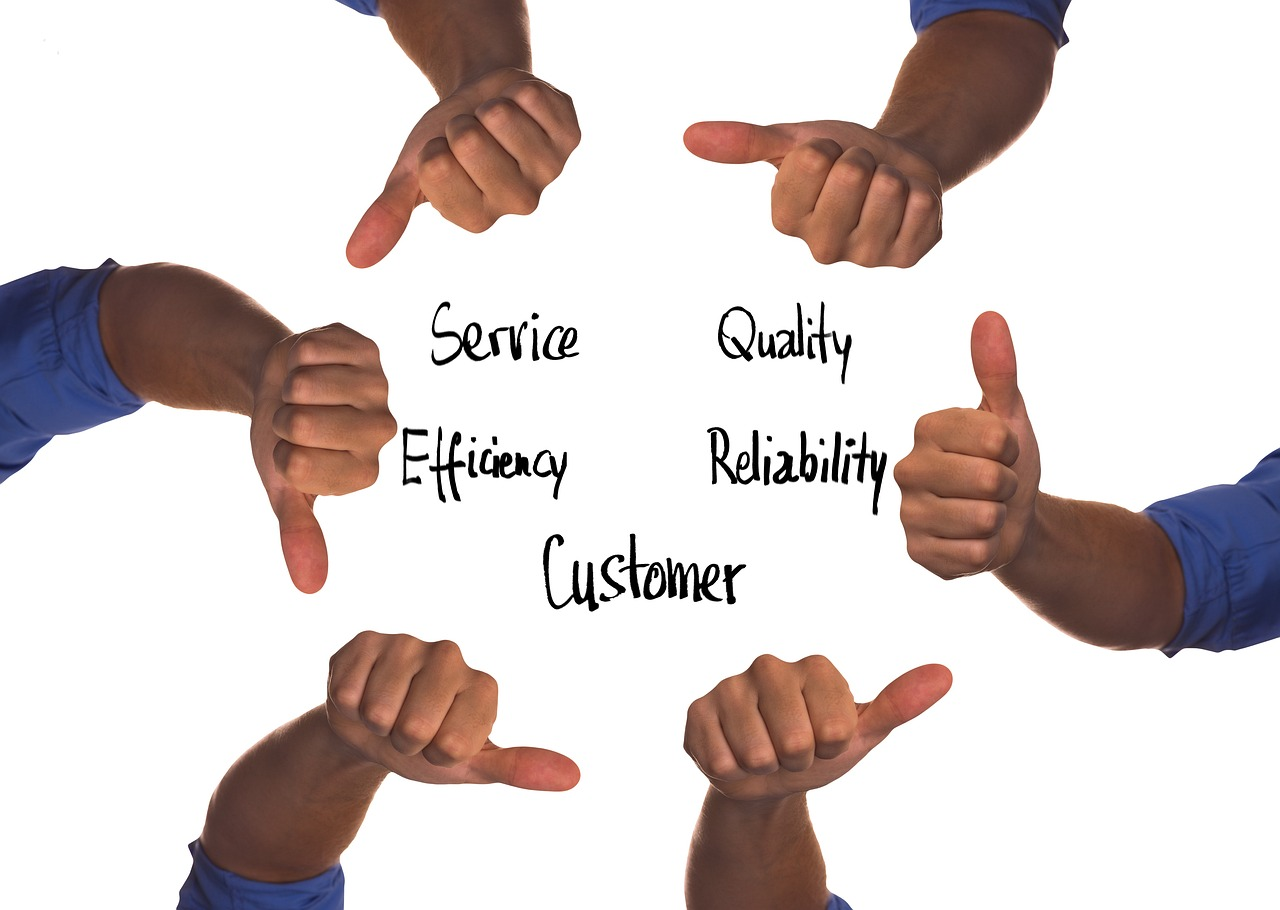Today, connecting with potential customers requires a strategic and customer-centric approach. Gone are the days of one-size-fits-all sales strategies. Today, it’s about tailoring your approach to each customer’s unique needs and preferences.
This personalization is the key to capturing attention and fostering engagement. By analyzing data and understanding consumer behavior, you can anticipate what they’re looking for and present your product or service as the solution they’ve been seeking. This approach increases the chances of making a sale and creates a positive and memorable interaction that encourages them to return for more.
In this post, we’ll delve into the dynamics of sales tactics, uncover the best strategies, and equip you with the tools to succeed as a sales professional. Let’s dive in!

The Significance of Consumer Sales Tactics
The sales landscape has transformed dramatically in recent years. Traditional methods no longer cut it when dealing with the digitally savvy, well-informed, modern consumer. Today, it’s all about adapting and catering to potential customers’ needs, preferences, and behaviors.
One notable factor is the importance of social responsibility and ethical considerations. Modern consumers seek high-quality products and personalized experiences and want to align themselves with brands committed to social and environmental causes.
Companies that integrate sustainable practices into their operations and transparently communicate their efforts resonate more with conscientious consumers. This shift towards conscious consumerism has prompted businesses to focus not only on a product but also on a compelling brand narrative that reflects their values and contributions to the greater good.
Effective sales tactics form the backbone of successful businesses. Whether you’re selling a product or service, understanding and utilizing the right tactics can make or break your success. Engaging potential customers requires a well-thought-out approach that resonates with their aspirations and pain points.
You must approach customers only using the best sales tactics! In the realm of sales, mastering the art of sales calls is an essential skill. A successful sales call goes beyond a mere conversation – it’s a strategic dance that requires active listening, empathy, and the application of a suitable sales tactic. By identifying the prospect’s needs and concerns, you can tailor your approach to provide solutions that genuinely address their pain points.

Choosing the appropriate sales tactic can significantly influence the call’s outcome, whether it’s the consultative approach, where you act as an advisor, or the direct approach that emphasizes the benefits upfront. Remember, the ultimate goal is not just closing a deal but building a relationship based on trust and understanding.
Using the right strategies not only attracts customers but also builds lasting relationships. When your tactics align with customers’ care, it creates a connection beyond a simple transaction. This means listening to their needs, addressing their concerns, and presenting solutions that genuinely help them. By focusing on this connection, you’re not just selling; you’re enriching their lives and becoming a trusted source they turn to.
Traditional vs. Modern Sales Tactics
In the past, sales tactics often relied on one-size-fits-all approaches. Modern tactics, however, focus on personalization and relevance. Traditional sales tactics and modern sales tactics represent two distinct approaches to selling products or services.
These approaches have evolved significantly due to changes in consumer behavior, technology, and the business landscape. Here are the key differences between the two:
Communication Channels:
In the past, sales primarily relied on face-to-face interactions, cold calling, and physical marketing materials like brochures and flyers.
Today, digital channels such as email marketing, social media, websites, and online chatbots play a pivotal role in reaching and engaging with potential customers. Virtual meetings and webinars have also become commonplace.
Customer-Centricity:
Traditional sales often focused on the product or service itself, with less emphasis on understanding the customer’s specific needs.
Modern sales tactics prioritize understanding customer pain points and tailoring solutions to meet those needs. Customer relationship management (CRM) systems and data analytics help in personalizing interactions.
Sales Process:
The traditional sales process tends to be linear, moving from prospecting to qualifying leads, presenting the product, handling objections, and closing the deal.
Modern sales techniques often adopt a more iterative and agile approach. Sales teams continuously adapt based on real-time feedback and may use techniques like inbound marketing, content marketing, and lead nurturing to build trust and rapport.
Data and Analytics:
Traditional sales often relied on gut feeling and experience rather than data-driven decision-making.
Modern sales leverage big data and analytics to track customer behaviors, monitor sales performance, and make informed decisions. Predictive analytics can even forecast future trends and sales opportunities.
Customer Engagement:
Traditional sales techniques can sometimes be seen as pushy or intrusive, leading to customer resistance.
Modern sales prioritize building long-term relationships through education, helpful content, and providing value, fostering a more collaborative and less confrontational sales environment.
Global Reach:
Traditional sales were often limited by geographical boundaries and required physical presence.
Modern sales tactics break down geographical barriers, enabling businesses to reach a global audience through online platforms and e-commerce.
Although traditional methods still have their place, modern tactics offer greater agility, reach, and effectiveness in the contemporary business landscape. This has become very necessary as consumers have become more informed and discerning than ever before. They research extensively before making a purchase decision.
A modern sales tactic should acknowledge this shift and leverage data and insights to align with consumer behaviors and preferences.

Understanding the psychology of why people buy is also very pivotal. Emotions, trust, and perceived value play crucial roles in purchase decisions. Modern sales tactics tap into these psychological triggers to create meaningful connections with potential customers.
From social proof to FOMO (fear of missing out), modern consumers are influenced by various factors. The ability to identify and address these influences within the sales process can significantly impact your success in closing deals.
Different Types of Modern Consumer Sales Tactics:
Below are some of the most effective modern tactics employed to get maximal consumer sales:
Personalization:
Personalization isn’t just a buzzword; it’s a game-changer. Tailoring your sales pitch to potential customers’ needs and preferences shows that you’re genuinely invested in their journey, increasing the likelihood of conversion.
Sales professionals now have access to a wealth of data. By harnessing this data effectively, you can create highly personalized experiences that resonate with potential customers. From past interactions to browsing behaviors, every data point contributes to a tailored approach.
Social Media:

Social media isn’t just for sharing cat memes; it’s a goldmine for sales opportunities. Platforms like Instagram, Facebook, and LinkedIn offer unique channels to engage with potential customers, showcase your product or service, and build a loyal following.
Modern consumers value authenticity. Building a genuine online presence allows you to connect on a personal level. Engage in meaningful conversations, share valuable content, and let your brand’s personality shine through.
Content Marketing and Storytelling:
Stories have a profound impact on human behavior. Incorporating storytelling into your sales strategy creates an emotional connection with potential customers. Craft narratives that highlight real-life benefits and outcomes, capturing their imagination.
Effective storytelling isn’t just entertaining; it’s persuasive. When you tell a story that resonates with potential customers’ challenges and desires, they can envision how your product or service can enhance their lives.
Data-Driven Insights and Analytics:
Gone are the days of blind decision-making. Analytics provide invaluable insights into what’s working and what isn’t. By analyzing data from sales calls, website interactions, and customer feedback, you can refine your approach for better results.
Predictive analytics take data utilization to the next level. By predicting potential customer behaviors, you can proactively tailor your sales pitch. This not only enhances your sales process but also saves time and effort.
Shopping Trends:

The internet has revolutionized shopping. E-commerce platforms offer convenience and accessibility, making it imperative for sales professionals to adapt their strategies to this digital realm.
A successful e-commerce strategy involves more than just setting up a website. Every detail matters in providing a seamless online shopping experience, from user-friendly interfaces to streamlined checkout processes.
Omnichannel Sales Approach:
The modern consumer journey is multifaceted. An omnichannel approach ensures consistency across all touchpoints. Whether a potential customer interacts with you online, in-store, or via social media, the experience should be cohesive.
Switching between channels shouldn’t be jarring. Maintain a unified brand voice and messaging to create a smooth transition, fostering trust and familiarity with potential customers.
Building Strong Customer Relationships:
In modern consumer sales tactics, the pivotal role of sales reps cannot be overstated. These skilled professionals are the bridge between your offerings and the potential customers seeking solutions. They are the face of your brand, the voice that resonates with prospective and existing customers.
Sales reps serve as potential customers’ first point of contact, paving the way for lasting connections. Their role extends beyond mere transactional interactions; they are ambassadors of your brand’s values, conveying authenticity and credibility. By empathetically understanding prospective customers’ pain points and aspirations, sales reps can tailor their approach, demonstrating that they genuinely care about solving their challenges.
Existing customers form the backbone of sustained business growth. Sales reps are pivotal in nurturing these relationships beyond the initial sale. By maintaining regular communication, addressing concerns, and offering personalized recommendations, sales reps demonstrate an ongoing commitment to the well-being and success of existing customers. This level of engagement fosters trust and loyalty, encouraging repeat business and referrals.
Effective Communication and Listening:

Communication is at the heart of every successful sales interaction. Sales reps who actively listen to the needs and preferences of both prospective and existing customers can tailor their messaging to resonate on a personal level. When sales reps genuinely understand customers’ unique circumstances and goals, they can position your product or service as the ideal solution, leading to higher conversion rates and customer satisfaction.
In the modern sales landscape, sales reps don’t just sell; they manage relationships. Equipping sales reps with the tools to communicate effectively positions them as trusted advisors who are committed to the success and satisfaction of every customer’s journey.
Influencer Collaborations:
Influencers wield significant influence (pun intended) over modern consumers. Partnering with relevant influencers allows you to tap into their engaged audiences and present your product or service authentically and in a manner that is relatable.
Not all influencers are created equal. Choose influencers whose values align with your brand. Authenticity is key; potential customers can spot insincerity from a mile away.
Subscription Models:

Subscription models offer a predictable stream of revenue while fostering long-term customer relationships. By providing ongoing value, you can create a loyal customer base that continues to choose your product or service.
Modern sales tactics extend beyond the initial purchase. Continuously engage with existing customers through exclusive offers, personalized content, and exceptional customer service to keep them returning for more.
Limited-Time Offers:
Limited-time offers, and scarcity tactics prompt potential customers to take action. The fear of missing out compels them to decide sooner rather than later, amplifying the effectiveness of your sales pitch.
Scarcity triggers an innate fear of loss. You tap into this psychological trigger by strategically incorporating limited-time offers into your sales strategy, motivating potential customers to seize the opportunity.
Mobile Commerce Strategies:
Mobile devices are an extension of modern consumers’ lives. Optimizing your sales tactics for mobile ensures that potential customers can seamlessly engage with your brand, regardless of their device.
A clunky mobile interface can deter potential customers. Ensure your website or app is mobile-responsive, offering a smooth shopping experience that makes it easy for them to explore and purchase.
Chatbots and AI in Sales:

Chatbots have come a long way. They respond instantly to queries, improving potential customers’ experience by addressing their concerns promptly and efficiently.
Chatbots can also assist in the sales process itself. They can guide potential customers through product options, answer questions, and suggest additional products based on their preferences.
Social Proof and Reviews:
The importance of Customer Testimonials cannot be overstated; word of mouth has evolved into online reviews and testimonials. Potential customers value the opinions of others who have experienced your product or service, making positive reviews an invaluable sales tool.
Social proof enhances your credibility. Share authentic reviews and testimonials across your marketing materials to instill trust in potential customers, showing them that your product or service delivers on its promises.
Sustainable and Ethical Sales Practices:
Modern consumers are increasingly conscious of ethical and environmental issues. Aligning your sales tactics with sustainability and ethical values can resonate deeply with potential customers prioritizing these concerns.
Highlight your commitment to sustainability throughout the sales process. From eco-friendly packaging to transparent sourcing, these efforts can differentiate your brand and attract ethically-minded consumers.
Gamification for Engaging Sales:
Making the sales process enjoyable injects fun and engagement into the process. By incorporating game-like elements, you can keep potential customers interested and motivated throughout their journey.
From point systems to interactive challenges, gamification rewards potential customers for their engagement and progress. This keeps them invested and provides a unique and memorable experience.
Personal Branding and Sales:

Sales professionals aren’t just selling products; they’re selling themselves. Developing a robust personal brand creates trust and rapport, making potential customers more receptive to your sales pitch.
Your brand encompasses your expertise, values, and personality. You establish yourself as a knowledgeable and relatable authority in your industry by effectively communicating your unique qualities.
Emotional Marketing Strategies:
Emotions drive decision-making. Tailoring your sales tactics to evoke emotions relevant to potential customers’ desires can create a powerful connection that encourages them to take action.
Think of iconic ads that tug at heartstrings or inspire action. By studying successful emotionally driven campaigns, you can gain insights into creating a resonant message that prompts potential customers to act.
Navigating Privacy and Data Concerns:

The modern sales landscape is data-rich, but respecting privacy is paramount. Potential customers value their data security; balancing utilizing data for personalization and safeguarding their information is critical.
Inform potential customers about how their data will be used. Transparency builds trust and ensures they feel in control of their information, fostering a positive relationship with your brand.
Employing Generation-Specific Tactics:
Generational preferences play a significant role in sales success. From Baby Boomers to Gen Z, understanding each generation’s values and communication preferences enables you to tailor your strategies effectively.
Millennials and Gen Z, for instance, value authenticity and social responsibility. Showcasing how your product or service aligns with their values can resonate and make your sales pitch more impactful.
Cross-Selling and Upselling Techniques:
Cross-selling and upselling aren’t about pushing unnecessary products; they’re about enhancing the customer’s experience and maximizing the value they receive.
These techniques involve offering complementary products or upgrades that genuinely enhance the potential customer’s purchase.
Real-Time Engagement and Customer Support:

Real-time engagement is a game-changer. Offering live chat support on your website enables potential customers to get immediate answers to their questions, increasing their confidence in your product or service.
Seizing the moment is crucial. When a potential customer is on your website and considering a purchase, a live chat option can provide the nudge they need to convert.
A/B Testing and Iterative Sales Strategies:

The beauty of modern sales tactics is that they’re adaptable. A/B testing involves trying different approaches and analyzing the results to fine-tune your tactics for optimal performance.
Test different elements, from sales pitches to call-to-action buttons. Analyzing lets you decide which tactics resonate most with potential customers.
Localization and Global Sales Strategy:
Global markets require a nuanced approach. What works in one culture might not resonate in another. Adapting your sales tactics to align with cultural norms and preferences is essential for international success.
Language barriers and cultural nuances can pose challenges. Collaborate with local experts to ensure your sales strategy is respectful and effective in diverse regions.
Conclusion:
Modern consumer sales tactics blend psychology, data utilization, authenticity, and adaptability. By understanding the dynamics of consumer behavior, leveraging personalized approaches, and incorporating innovative strategies, you can excel in the art of sales.
Remember, the key lies in building meaningful connections, creating value, and aligning your tactics with potential customers’ evolving needs and preferences. Whether you’re a seasoned sales professional or embarking on your sales journey, these tactics can empower you to navigate the complex sales world confidently and succeed.





